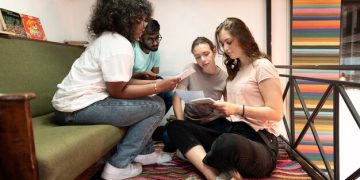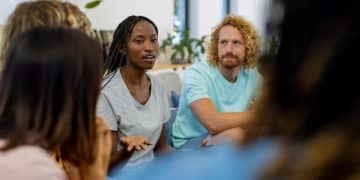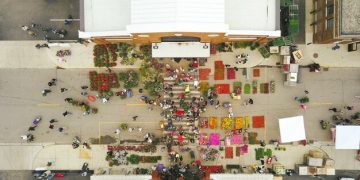Challenges of LGBTQ+ Individuals in Rural US Communities
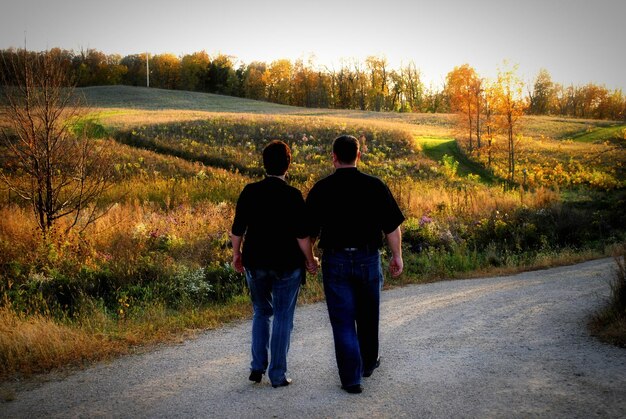
This article explores the unique and multifaceted challenges faced by LGBTQ+ individuals in rural communities across the United States, examining issues ranging from social isolation and lack of resources to healthcare disparities and economic barriers, providing a comprehensive understanding of their lived experiences.
Rural communities, often idealized for their tranquility and community bonds, present a distinct set of complexities for a significant segment of their population: lesbian, gay, bisexual, transgender, queer, and other diverse sexual orientations and gender identities. Understanding the challenges faced by LGBTQ+ individuals in rural communities is crucial for fostering inclusive environments and addressing systemic inequities. This exploration delves into the nuanced issues that shape their daily lives, moving beyond generalized assumptions to reveal the specific realities of rural LGBTQ+ experiences.
The Fabric of Isolation: Social and Community Challenges
Navigating social landscapes in rural areas presents unique hurdles for LGBTQ+ individuals. The very cohesion that defines small towns can sometimes become a barrier, creating environments where differences are less understood or accepted. This often leads to profound feelings of isolation, distinct from the anonymity of urban settings.
Limited Community and Peer Support
In smaller, geographically dispersed communities, accessing visible and affirming LGBTQ+ spaces can be nearly impossible. Unlike cities with dedicated community centers, social groups, and events, rural areas often lack these vital support networks. This absence means individuals may struggle to find peers who share similar experiences, leading to:
- A profound sense of loneliness and disconnection.
- Difficulty in openly expressing one’s identity.
- Increased feelings of being an “only” within their immediate social circle.
This scarcity of community resources means that many LGBTQ+ individuals in rural settings feel perpetually “closeted,” even among friends and family, to avoid potential judgment or ostracization. The fear of gossip spreading quickly through close-knit networks can be a powerful deterrent to self-expression. This contrasts sharply with urban settings where diverse communities often thrive, offering immediate access to identity-affirming environments. The constant self-monitoring required in such environments can take a significant toll on mental well-being, fostering an internal sense of being “other” or “different” that may never truly dissipate.
The lack of visibility also affects younger LGBTQ+ individuals, who may struggle to find role models or examples of successful, open queer lives within their immediate surroundings. This can impact their identity formation and mental health, as they navigate their developing identities without crucial support or affirmation. Furthermore, without regular opportunities for social engagement with other LGBTQ+ individuals, forming romantic relationships can also be profoundly challenging, exacerbating feelings of isolation.
Healthcare Disparities: A Critical Gap in Rural Services
Access to healthcare is a fundamental human right, yet for LGBTQ+ individuals in rural areas, this access is frequently compromised, presenting significant disparities that impact their physical and mental well-being. The issue goes beyond mere availability of services, touching upon stigma, lack of specialized training, and systemic biases.
Barriers to Inclusive Healthcare
Rural healthcare facilities, often stretched thin by resource limitations and a smaller patient base, frequently lack the specialized training necessary to provide culturally competent care for LGBTQ+ patients. This can manifest in several ways:
- Lack of understanding regarding transgender health needs, including hormone therapy or gender-affirming care.
- Inadequate knowledge about unique health risks faced by LGBTQ+ individuals (e.g., higher rates of certain STIs, mental health challenges).
- Hesitation or outright refusal from providers to address LGBTQ+-specific health concerns due to personal biases or lack of training.
This absence of inclusive care forces many to travel long distances, often to urban centers, to receive appropriate medical attention, incurring additional costs and logistical challenges. For those with limited financial resources or transportation, this travel may be impossible, leaving critical health needs unmet. The fear of encountering judgment or discrimination from local providers can also deter individuals from seeking necessary care, even for routine check-ups or preventative screenings. This contributes to poorer health outcomes and exacerbates existing health disparities within the LGBTQ+ community.
Beyond primary care, mental health services are particularly scant in rural areas. LGBTQ+ individuals often face higher rates of depression, anxiety, and suicide attempts due to societal prejudice and discrimination. The lack of accessible, affirming mental health professionals in rural settings means that these critical needs frequently go unaddressed, further compounding their challenges. Many health professionals in these areas may also lack familiarity with common mental health stressors specific to the LGBTQ+ population, such as minority stress or the challenges of coming out, leading to less effective therapeutic interventions.
The absence of comprehensive, inclusive sexual health education and services is another significant concern. Rural health clinics may not offer PrEP (pre-exposure prophylaxis) or comprehensive STI testing with the same regularity or privacy as urban clinics. This can put LGBTQ+ individuals, particularly gay and bisexual men, at higher risk for HIV and other sexually transmitted infections, underscoring a critical public health gap in rural areas. Access to reproductive health services for lesbian and bisexual women, or trans men, can also be limited, often due to a lack of understanding or implicit bias from local providers.
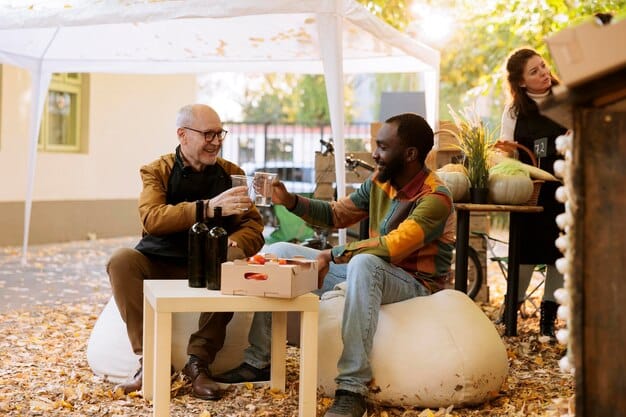
Economic and Employment Hurdles
The economic landscape of rural communities presents a distinct set of challenges for LGBTQ+ individuals, often amplifying existing vulnerabilities. While economic hardship can affect anyone in these areas, LGBTQ+ individuals may face additional layers of discrimination and limited opportunities, impacting their financial stability and overall quality of life.
Rural employment opportunities are often concentrated in industries that may be less diverse or inclusive than those found in urban centers. Traditional sectors like agriculture, manufacturing, or service industries can sometimes harbor more conservative attitudes, making it difficult for LGBTQ+ individuals to find affirming workplaces. The fear of discrimination in hiring, promotions, or even peer interactions can lead to:
- Self-censorship and concealment of identity at work.
- Reluctance to seek legal recourse for discrimination due to limited local support systems.
- Brain drain, as talented LGBTQ+ individuals leave rural areas for more inclusive job markets.
This “brain drain” not only impacts the individuals but also deprives rural areas of diverse talent and perspectives, stagnating local economic and social development. The inability to secure stable, affirming employment can force individuals to either remain in non-affirming jobs, enduring daily stress and discrimination, or to relocate, often separating them from their families and established community ties. This economic pressure can be particularly acute for transgender individuals, who often face even higher rates of employment discrimination.
Furthermore, economic stability in rural areas can be tied to established family businesses or networks, which might not be accessible or welcoming to LGBTQ+ individuals, especially if family relationships are strained due to their identity. This can limit entrepreneurial opportunities and make it harder to build wealth or even secure basic income. The lack of diverse industries also means fewer opportunities for career growth, potentially trapping individuals in low-wage jobs with limited benefits, further exacerbating health disparities as access to employer-sponsored health insurance becomes limited.
Legal and Policy Deficiencies: An Uneven Playing Field
Despite nationwide advancements in LGBTQ+ rights, rural areas often lag in implementing and enforcing protections, leaving many individuals vulnerable to discrimination. The legal and policy landscape in these communities can be a patchwork of progress and neglect, creating an uneven playing field that affects housing, employment, and public accommodation.
Absence of Local Non-Discrimination Ordinances
While federal protections offer some recourse, many states and, crucially, specific rural counties and towns, lack explicit non-discrimination ordinances for LGBTQ+ individuals. This means that:
- Individuals can be legally denied housing based on their sexual orientation or gender identity.
- Employers may not face legal repercussions for firing or refusing to hire LGBTQ+ individuals.
- Businesses, even those serving the public, may refuse service without legal consequence.
This absence of explicit local protections creates a climate of vulnerability, making it difficult for LGBTQ+ individuals to feel secure in their homes, workplaces, or public spaces. Even where statewide protections exist, enforcement can be weak or local authorities may lack the resources or understanding to properly investigate discrimination claims. The pervasive fear of legal impunity for discriminatory acts forces many to remain closeted or to accept discriminatory treatment rather than risk further marginalization or retaliation.
Furthermore, the lack of legal clarity can create an environment where local law enforcement and public officials might not be adequately trained to handle issues affecting LGBTQ+ individuals, leading to misinterpretations of rights or, in unfortunate cases, direct discrimination. This is particularly concerning for transgender and gender non-conforming individuals, who may face difficulties in navigating gender markers on identification, or who may experience harassment or misgendering within official capacities. The absence of comprehensive training for first responders regarding LGBTQ+ issues can also lead to inadequate responses in emergencies or instances of bias-motivated violence, further eroding trust between the community and local authorities.
The political climate in many rural areas can also exacerbate these challenges. Local elections often bring to power officials who may not be supportive of LGBTQ+ rights, or who may actively work against them. This can lead to the passage of discriminatory local policies or the blocking of inclusive initiatives, creating a perpetual struggle for fundamental rights at the grassroots level. This makes advocacy particularly challenging, as LGBTQ+ individuals and their allies are often a small minority attempting to influence deeply entrenched local political structures.
Education and Youth Well-being: A Challenging Environment for Growth
For LGBTQ+ youth in rural communities, the challenges extend into the very institutions meant to nurture their growth and development. Schools, intended as safe spaces for learning, can often become sites of isolation and misunderstanding, impacting academic performance, mental health, and overall well-being.
Lack of Inclusive Curricula and Support Services
Many rural school systems lack comprehensive, LGBTQ+-inclusive curricula, which means young people may never see their identities reflected positively or even acknowledged in their learning environment. This absence can lead to:
- Feelings of invisibility and marginalization.
- Limited access to accurate information about sexual orientation and gender identity.
- Difficulty in finding affirming teachers or school counselors.
This lack of inclusive education can perpetuate stereotypes and foster ignorance among peers, leading to higher rates of bullying and harassment. LGBTQ+ youth in rural schools frequently report experiencing verbal and even physical assaults, often with little intervention from school staff, who may be unprepared or unwilling to address such issues directly. The absence of Gay-Straight Alliances (GSAs) or similar student support groups further isolates these youth, depriving them of peer solidarity and advocacy platforms that are common in more urbanized school districts. Many rural schools may also lack appropriate resources for mental health support, compounding the impact of bullying and isolation on emotional well-being.
The challenge is not just about direct discrimination; it’s also about a pervasive lack of understanding. Teachers and administrators in rural settings may not receive adequate training on how to create inclusive classrooms, how to use correct pronouns, or how to intervene effectively in anti-LGBTQ+ bullying. This lack of knowledge translates into an environment where microaggressions are common, and where LGBTQ+ students often feel they cannot bring their authentic selves to school without fear of negative repercussions. This struggle can significantly impact academic performance, attendance, and general engagement in school, potentially leading to higher dropout rates among LGBTQ+ youth in these areas.
Furthermore, the pressure to conform to traditional gender roles and heterosexual norms can be particularly intense in rural schools, where social norms may be more rigid. This can make the process of coming out or exploring one’s identity particularly daunting for young people, who may fear alienating their friends, family, or entire social circle. The intersection of these factors creates a profound challenge for LGBTQ+ youth, whose formative years are spent navigating environments that may not fully affirm who they are, impacting their sense of self-worth and future aspirations.
Addressing Substance Use and Mental Health: A Complex Interplay
The intersection of social isolation, discrimination, and limited resources significantly impacts mental health and can contribute to higher rates of substance use among LGBTQ+ individuals in rural areas. Addressing these issues requires a nuanced understanding of the underlying stressors and targeted interventions.
Unique Mental Health Stressors
LGBTQ+ individuals in rural settings often experience “minority stress,” a term describing the chronic stress faced by individuals belonging to stigmatized minority groups. This stress stems from:
- Experiences of prejudice and discrimination.
- Expectation of rejection and concealment of identity.
- Internalized homophobia or transphobia.
These stressors contribute to significantly higher rates of depression, anxiety disorders, and suicidal ideation compared to their heterosexual and cisgender peers, or even LGBTQ+ individuals in more urban, affirming environments. The lack of readily available, culturally competent mental health services in rural areas means that many of these issues go undiagnosed and untreated. Therapists may lack specific training on LGBTQ+ issues, may hold personal biases, or may simply be unavailable, forcing individuals to manage severe mental health challenges without professional support. This void can push individuals towards unhealthy coping mechanisms, including substance use, to self-medicate or escape the pervasive stress.
Substance use patterns among rural LGBTQ+ populations are influenced by the same factors that impact their mental health. Social isolation can lead to increased alcohol consumption or drug use as a means of coping with loneliness or lack of social connection. The limited recreational opportunities in rural areas may also inadvertently channel individuals towards substances as a primary form of entertainment or escape. Studies indicate higher rates of smoking, excessive alcohol use, and illicit drug use among LGBTQ+ individuals, a disparity often exacerbated in rural settings where protective factors, such as strong community support and accessible harm reduction services, are absent.
Effective interventions require a multi-pronged approach, including expanding access to affirming mental health providers through telehealth services, increasing funding for rural LGBTQ+ community centers (even virtual ones), and integrating LGBTQ+ cultural competency training into all rural healthcare and social service programs. Additionally, public health campaigns specifically targeting rural LGBTQ+ individuals could help destigmatize mental health issues and encourage help-seeking behavior. Addressing these challenges is not just about treatment; it’s about building resilient communities where LGBTQ+ individuals feel safe, seen, and supported. The creation of supportive social networks, even through online platforms, can serve as a vital lifeline in combating isolation and its adverse effects on mental and physical health.
Advocacy and Future Directions: Building Bridges in Rural America
While the challenges faced by LGBTQ+ individuals in rural communities are profound, there is a growing movement of advocacy and resilience aimed at fostering greater inclusion and equity. The future lies in proactive strategies that empower communities, amplify voices, and bridge the gaps in resources and understanding.
Grassroots Movements and Digital Bridges
One of the most promising avenues for change lies in grassroots movements and the strategic use of digital platforms to connect isolated individuals. Despite geographical spread, rural LGBTQ+ advocates are leveraging online spaces to:
- Create virtual support groups and communities.
- Share resources and information about LGBTQ+-affirming services.
- Organize advocacy efforts for local policy change.
These digital bridges provide a vital lifeline for many, enabling them to find solidarity and strength despite physical distance. Local initiatives, though often small, are also playing a critical role by organizing pride events, educational workshops, and inclusive social gatherings that gradually shift community perceptions. These efforts are often driven by dedicated individuals or small volunteer groups who recognize the pressing need for change in their own backyards, creating ripples of acceptance one event at a time. The power of these local advocates to connect directly with community members, and to share personal stories, is invaluable in breaking down prejudices and building empathy.
Furthermore, state and national LGBTQ+ organizations are increasingly recognizing the unique needs of rural populations and are beginning to allocate resources and develop tailored programs. This includes advocating for statewide non-discrimination protections, funding rural-specific health initiatives, and offering training to rural service providers. The goal is not to urbanize rural areas but to ensure that rural LGBTQ+ individuals have equitable access to resources and the same fundamental rights as their urban counterparts. It’s about empowering rural communities to develop their own strengths and solutions, rooted in local contexts, while benefiting from broader advocacy networks.
The path forward also includes continued research into the specific disparities and needs of rural LGBTQ+ populations, using data to inform policy and funding decisions. This ensures that interventions are evidence-based and effectively address the unique complexities of rural life. Ultimately, building bridges in rural America involves a collaborative effort from individuals, local organizations, and broader advocacy groups to cultivate environments where all residents, regardless of sexual orientation or gender identity, can thrive with dignity and respect. The visibility of even a few openly LGBTQ+ individuals, living successful and integrated lives, can profoundly shift the perception of an entire community, demonstrating that diversity is a strength, not a threat.
| Key Point | Brief Description |
|---|---|
| 🫂 Social Isolation | Limited LGBTQ+ community and support systems lead to feelings of loneliness and lack of belonging. |
| ⚕️ Healthcare Disparities | Lack of inclusive care and specialized training among rural medical professionals is common. |
| 💼 Economic Barriers | Discriminatory employment practices and limited job diversity hinder financial stability. |
| 📚 Youth Well-being | Rural schools often lack inclusive curricula and supportive environments for LGBTQ+ youth. |
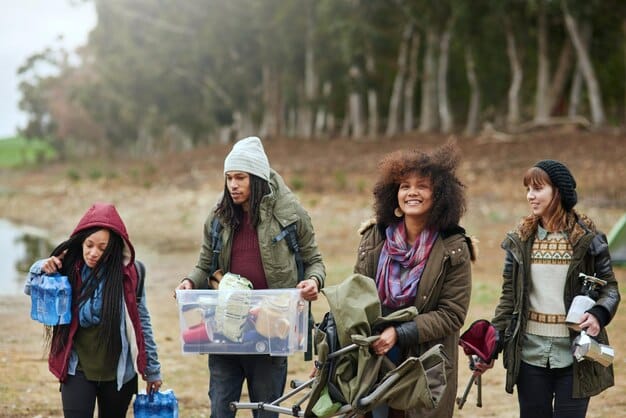
Frequently Asked Questions About LGBTQ+ Challenges in Rural Areas
The primary social challenges include profound isolation due to the lack of visible LGBTQ+ community spaces and support networks. This often leads to a constant need for self-censorship, fear of gossip, and difficulty finding peers who share similar identities, impacting overall well-being and sense of belonging.
Healthcare access is significantly limited, with rural facilities often lacking specialized training in LGBTQ+ health. This can result in inadequate care for transgender individuals, insufficient mental health resources, and a reluctance from providers to address specific LGBTQ+ health concerns, forcing long-distance travel for affirming services.
Yes, economic difficulties include limited diverse employment opportunities and potential discrimination in hiring or promotion within often conservative local industries. This can lead to underemployment, brain drain as individuals seek affirming workplaces elsewhere, and difficulties in accessing traditional economic networks.
LGBTQ+ youth in rural schools frequently encounter a lack of inclusive curricula, creating feelings of invisibility. They often face higher rates of bullying and harassment due to a perpetuation of stereotypes, and there’s a general absence of supportive resources like Gay-Straight Alliances or affirming counselors, affecting their well-being.
Support efforts include grassroots movements leveraging digital platforms for virtual support groups and advocacy. State and national LGBTQ+ organizations are also increasing resources for rural initiatives, focusing on non-discrimination laws, health equity, and cultural competency training for local service providers, aiming for systemic change.
Conclusion
The exploration of challenges confronting LGBTQ+ individuals in rural communities unveils a complex tapestry woven from social isolation, inadequate healthcare, economic hurdles, and legislative gaps. These issues are not merely localized inconveniences but fundamental barriers to dignity, safety, and well-being. Understanding these nuanced realities is not a static exercise but an ongoing commitment to fostering environments where every individual, regardless of their sexual orientation or gender identity, can thrive within their chosen community. The path forward demands sustained advocacy, resource allocation, and a collective willingness to build bridges of understanding and acceptance, transforming rural America into a place of true equity for all.
